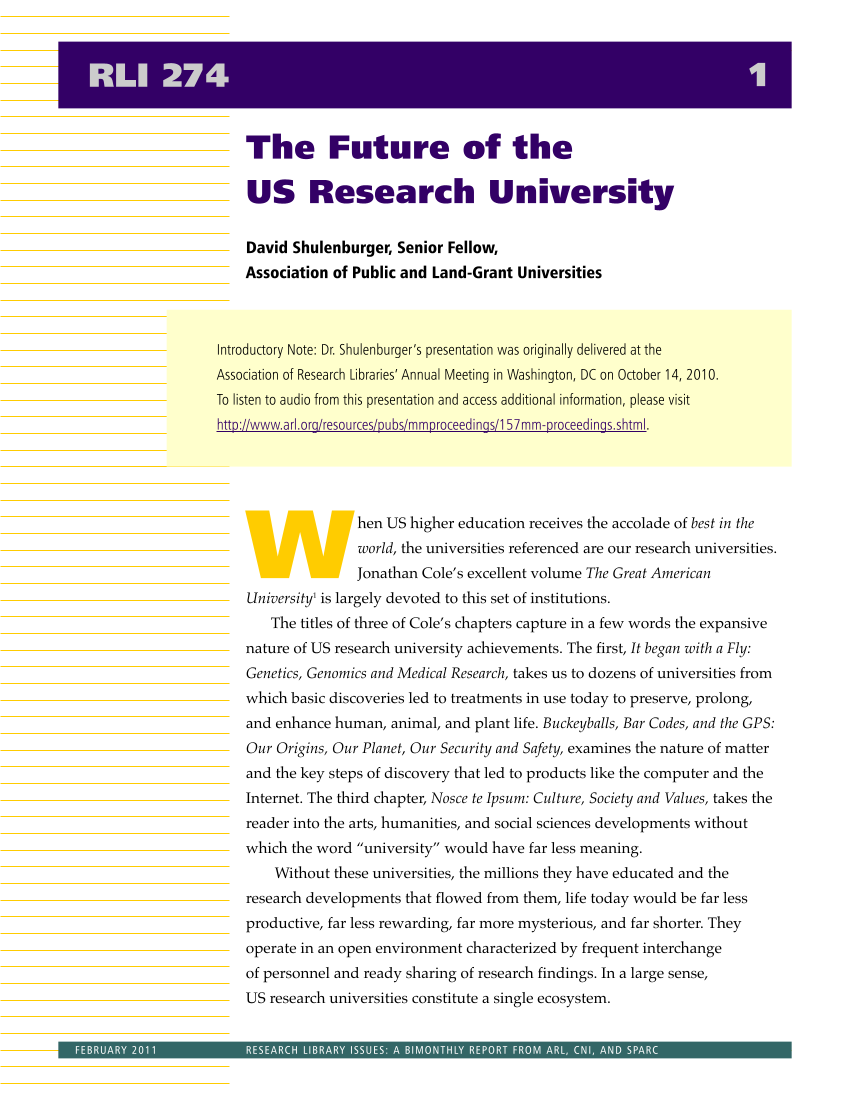The Future of the US Research University David Shulenburger, Senior Fellow, Association of Public and Land-Grant Universities W hen US higher education receives the accolade of best in the world, the universities referenced are our research universities. Jonathan Cole’s excellent volume The Great American University1 is largely devoted to this set of institutions. The titles of three of Cole’s chapters capture in a few words the expansive nature of US research university achievements. The first, It began with a Fly: Genetics, Genomics and Medical Research, takes us to dozens of universities from which basic discoveries led to treatments in use today to preserve, prolong, and enhance human, animal, and plant life. Buckeyballs, Bar Codes, and the GPS: Our Origins, Our Planet, Our Security and Safety, examines the nature of matter and the key steps of discovery that led to products like the computer and the Internet. The third chapter, Nosce te Ipsum: Culture, Society and Values, takes the reader into the arts, humanities, and social sciences developments without which the word “university” would have far less meaning. Without these universities, the millions they have educated and the research developments that flowed from them, life today would be far less productive, far less rewarding, far more mysterious, and far shorter. They operate in an open environment characterized by frequent interchange of personnel and ready sharing of research findings. In a large sense, US research universities constitute a single ecosystem. RLI 274 1 FEBRUARY 2011 RESEARCH LIBRARY ISSUES: A BIMONTHLY REPORT FROM ARL, CNI, AND SPARC Introductory Note: Dr. Shulenburger’s presentation was originally delivered at the Association of Research Libraries’ Annual Meeting in Washington, DC on October 14, 2010. To listen to audio from this presentation and access additional information, please visit http://www.arl.org/resources/pubs/mmproceedings/157mm-proceedings.shtml.






















